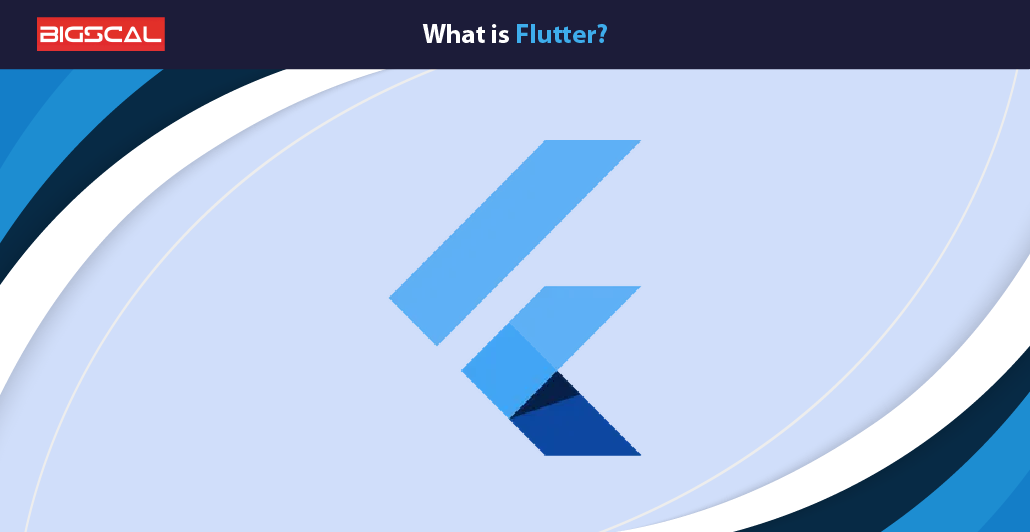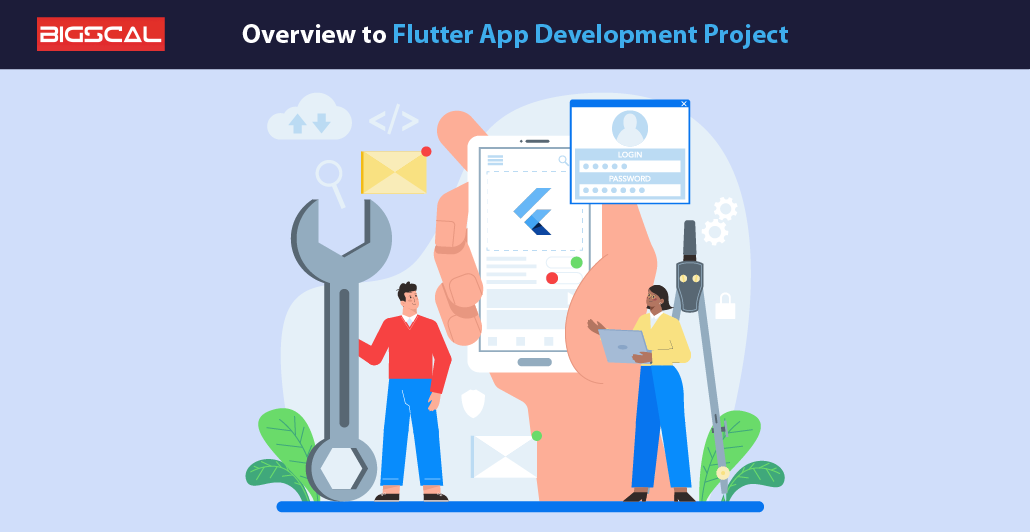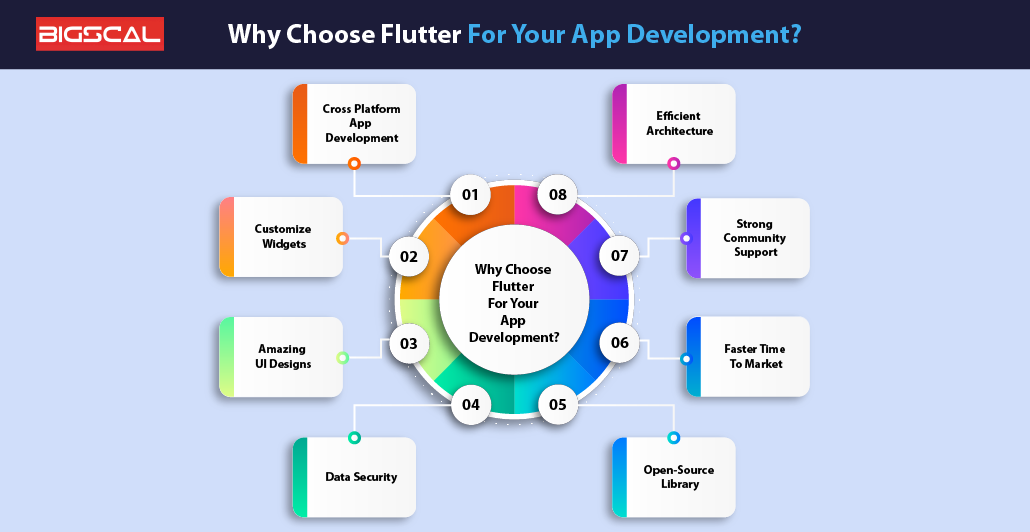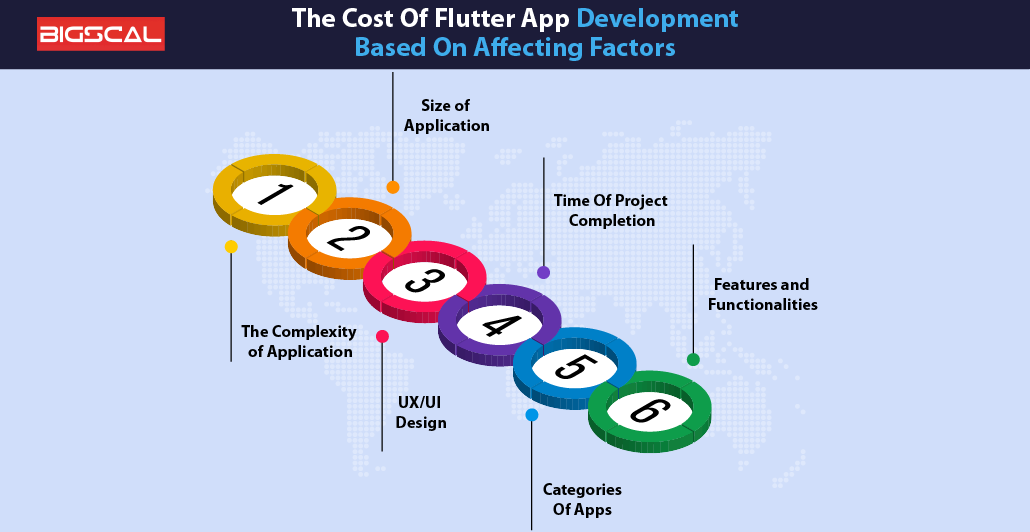What Will Be The Flutter App Development Cost In 2024
Quick Summary: The popularity of Flutter makes it a preferable choice among developers and one who wants to develop cross platform apps. However, just choosing it is not enough. If you are considering it, you must acknowledge the flutter of app development costs. But how would you know? Just by reading this article!
Introduction
Okay so, there’s no doubt that flutter framework is so popular among developers and businesses who are looking for cross platform frameworks. Due to various advantages Flutter App Development Services presents, everyone tends to choose it for their development projects. But the main and first question arises: how much does flutter app development cost?
Therefore, before considering it or making a budget plan or beginning the development process you must analyze the flutter cost. But how?
Well, for this you do not need to go anywhere we will tell you about the factors affecting the cost of Flutter app development. Additionally, we will give you the reasons why you should you opt Flutter. Further, we will give you a thorough overview to Flutter app development.
For analyzing the flutter app cost we will taking into consideration the ongoing market trends, technological advancements, and overall mobile apps development scenario. By analyzing these factors, businesses and developers can gain valuable insights into budgeting and resource allocation for their Flutter app projects in the coming year.
So, keep reading!
What is Flutter?

Flutter is an open-source framework for developing applications. This software kit is developed by google. Developers use it create natively compiled applications for mobile, web, and desktop from a single codebase. Additionally, it uses the Dart programming language and customizable widgets to create visually appealing interfaces.
Furthermore, Flutter’s hot reload feature allows you to modify code in real time, speeding up development. It provides a responsive layout, which helps create flexible graphics and interfaces. With platform-specific plugins and extensive community support, Flutter simplifies cross-platform application development process. Moreover, it makes it a popular choice for developers aiming for stability, performance and efficiency across devices and platforms.
Overview to Flutter App Development Project

The flutter app development project refers to the process of developing a software or a mobile application with Flutter. This framework allows developers to build apps for Android, iOS, and other platforms from a single codebase, making them more efficient and cost-effective. In developing a Flutter app development project, developers usually start by setting up a development environment and installing the necessary Flutter tools.
Additionally, Flutter’s widgets are then used to design the app’s user interface, which are prefabricated components used to create UI elements such as buttons, text inputs, navigation menus, etc. Developers can customize these widgets to match the design needs of the application.
Furthermore, the developers then use Dart, the programming language used in Flutter, to write the meaning and functionality of the app. Thus, it includes implementing features such as data storage, user authentication, API integration, and more. Flutter provides libraries and packages to simplify this process and improve the app’s complexity and performance.
After coding, developers test the app extensively to make sure it works well on a variety of devices and large screens. Any bugs or issues are fixed and the app’s performance and speed are improved. Therefore, in last they submit the app to an app store. The app stores can be Google Play Store or the Apple App Store, where it is available for users to download and use.
The quick steps for Flutter app development process:
1. Configure the development environment:
Install the Flutter SDK and necessary tools such as Android Studio or Visual Studio Code. Make sure your system meets Flutter’s requirements.
2.Create a new project
Use the Flutter CLI or your IDE to create a new Flutter project. This creates a basic layout for your flutter app developer here.
3. Design UI
Flutter uses widgets for UI design. Use Flutter’s rich set of widgets such as buttons, text fields and characters to change the look and feel of your app.
4. Add a function
Write Dart code and add a function to your app. This includes handling user input, fetching data from APIs, and using business logic.
5. Testing
Use Flutter’s testing framework to write units, widgets, and integration tests to ensure that your app works as expected.
6. Debugging and Optimization
Troubleshoot any issues with Flutter error monitoring tool or Flutter’s debugging tools. Optimize your app for functionality and user experience.
7. Deployment
Once your app is ready, use Flutter’s deployment guides to deploy your app idea to the Google Play Store and Apple App Store.
Why Choose Flutter For Your App Development?
So, you might be wondering why you should consider Flutter for your app development project, so here we are explaining to you the reasons and advantages of Flutter. Have a look:

Cross Platform App Development
Flutter is an excellent choice for app development due to its ability to optimize Cross Platform App Development. Hence, Flutter allows developers to write code once and deploy it across multiple platforms. These platforms include, Android, iOS, web, and desktop. Additionally, due to this capability it reduces app development costs in time and costs as there is no need for separate code bases for different platforms.
Furthermore, Flutter’s hot reload feature enables developers to spot changes immediately. It speeds up the development app maintenance process even more. Moreover, Flutter apps have native-like functionality, ensuring a seamless user experience across devices and operating systems.
Customize Widgets
The other reason why you must consider Flutter is that it provides customized widgets. So, with Flutter you can choose from different ready-made widgets that can help you make any UI look really cool and beautiful. Moreover, these widgets are simple to adapt in a way that satisfies both the brand’s requirements and design specifications.
On top of that, Flutter’s widget-based programming encompasses the capability of building wide ranging complex UIs at minimum effort. It being basic to the operation of these specialists is a main reason for its popularity. Besides, what is particularly impressive regarding Flutter is that it provides very powerful features and Cupertino widgets; as a result, the UI is not misaligned across platforms. Thereby, its impact on the user’s experience is positive.
Amazing UI Designs
Else, Flutter is remarkable in the fact that you get amazing UI designs. Its capability is in crafting the most eye-catching and the unique UI designs. Flutter make sure developers have ability to utilize from the ever growing library of UI elements and well, animations. Input: It helps to bring about modern and appealing interfaces.
Using Flutter, it is possible to implement all types of custom animations, transitions, and gesture interactions that can be used to develop high-end UI design. It also combines with developers’ ability to create the most engaging user experience to help apps to not only attract but also to stand out and be recognised in the crowded app market.
Data Security
The issue that strikes mostly in this digital age is the data security. Flutter can handle this point and it can be your ally in this. Thus, Flutter’s security strategy focuses on providing a reliable arsenal of tools and technologies for data protection in apps. The security module in Flutter apps utilizes encryptions with secure encryption and authentication to secure the private data from anyone who is not authorized to access and cyber theft.
So, Flutter has other ways to utilize platform-specific security features too. It will ascertain implementation of standard practices and regulations in the industry. Thus, it is suitable for the security of apps operating on sensitive data. kittywaving.com Artificial Intelligence-powered chatbots have revolutionized the digital realm, providing users with efficient and personalized customer service experiences.
Open-Source Library
This is the main advantage and reason to choose Flutter. The open-source nature of Flutter means that its codebase is accessible to developers around the world. This creates cohesion, continuous improvement. Additionally, it ensures transparency in the development process.
As Flutter is managed by Google, it benefits from regular updates and improvements by a team of dedicated professionals. The open-source aspect also means that Flutter is adaptable to the needs of the project and can be highly customized. It provide developers a high level of flexibility and control over their apps.
Faster Time To Market
One of the main advantages of Flutter is that it facilitates rapid app development. Its hot reload feature allows developers to make changes to the code and see the results in real time, significantly reducing development time. This iterative approach accelerates the development process.
Additionally, it increases collaboration between project team members, as changes can be shared and reviewed quickly. Furthermore, a single Flutter codebase with multiple platforms (iOS and Android) eliminates the need for development cycles. Thereby, making time-to-market effectiveness much more flexible.
Strong Community Support
You must consider Flutter because by leveraging it you will get strong community support. Therefore, many experts actively contributing to its development and adoption. This strong community support includes many resources. These resources can be tutorials, plugins, libraries, conferences, etc.
With these resources developers can find guidance, share knowledge, collaborate on projects Community development. Flutter is up-to-date with the latest industry trends, best practices and technological advances. This makes it a reliable choice for app development projects.
Efficient Architecture
Based on the Dart programming language, Flutter’s architecture is designed to promote efficiency, scalability, and productivity. Hence, this also makes it a great choice for your projects. It is responsive design and widget-based UI allows developers to create an app that is visually appealing and responsive. Additionally, The layered architecture of Flutter, include framework, engine, and platform-specific embedder, ensures seamless integration with the underlying platforms.
Additionally, it maintain compatibility across devices and screen sizes. This high-performance architecture provides improves app performance. Further, it lowers resource exploitation. It is also quite useful in improving user experience and making it the best option for the modern, well-featured applications.
The Cost Of Flutter App Development Based On Affecting Factors
Here’s the factors that affects the cost to develop a Flutter app and the estimated cost, consider these as it will help you to app development budget:

The Complexity of Application
The Flutter app Final product is characterized by a high level of complexity that determines problems in the app’s development. It causes fluctuations in the costs. Such solutions include simple cases and these applications are aimed at implementing basic functions. They are similar to a calculator or task list in terms of being very low cost, with most of the high-end applications being invariably extremely expensive. Among the features exist is the ability to have real time data synchronization, Login authentication and integration with APIs from other systems providers.
The rough development estimates for a simple Flutter application may lie between $5000 and $20,000. It includes very basic functionality with minimum user interface and backend integration. But at the same time, an app using Flutter with advanced features, backend, may cost about $20,000 to $100,000.
Size of Application
A Flutter app functioning involves clearer visualization of the number of screens involved, the features and flows. Similarly, this is particularly applicable to the app’s total number of screens and basic functions. Smaller apps with more screens and more basic functions denies a big budget. It is composed of several screens, numerous business flows, and the extensive scenery is also generic.
The prices might vary from $5000 and $20000 depending on the Flutter app having up to 5 – 10 screens with a simple operation. The responsibilities will be to work in collaboration with the design team members for UI/UX creation, development, testing and execution. While a very basic app with like 20 screens, push notifications, location services, various back-ends and more among the additional features can be around $25,000 – $100,000, or more.
UX/UI Design
The UX/UI design phase of Flutter app development plays an important role in shaping the user experience and the overall enjoyment of the app. Factors that affect the value of a UX/UI design include complexity, customization, and expertise of the designers involved.
Complexity is an important determinant. Simple designs with basic functionality are usually inexpensive. While complex systems with complex interfaces and graphics can increase costs. Customizations in designs also affect the cost significantly. Custom designs featuring unique branding and user navigation require more time and effort. Thus, it ends up increasing in cost.
Hence, considering these factors, the estimated cost of UX/UI design in Flutter app development ranges from $5,000 to $20,000 for a medium-complexity application.
Time Of Project Completion
The time required to complete a Flutter app project depends on a variety of factors such as project size, features, mobile app developers team size, flutter app development team location, and development process.
The scope of the app describes the functionality and challenges of the app. As such, a larger scope with more features will take longer to develop, which will affect the overall project timeline and cost. The size and expertise of the teams play an important role. Larger teams can accelerate development but come with higher costs. In contrast, a smaller team may take longer but can be more cost-effective.
The development process, whether using agile methods or traditional waterfall methods. It also affects the project timeline. In general, agile methods lead to faster iterations and faster delivery. Considering these factors, a medium-complexity Flutter app project can take 3 to 6 months to complete. Hence the project in this tenure can cost around $20,000 to $100,000.
Categories Of Apps
The categories of apps also highly affects the flutter app development cost. The categories of apps include, simple apps, moderate complex apps, and Complex apps.
So, The cost for simple or basic Flutter apps contain minimal features such as calculators or spreadsheet apps. The cost of developing such apps can range from $5,000 to $15,000. Whereas, moderate complexity apps with user authentication, database integration, and basic API integration fall into this category Cost from $15,000 to $40,000.
Complexity of apps: Apps with custom functionality, real-time features, advanced APIs, and complex UI/UX design fall in. Cost can range from $40,000 to $100,000+.
Features and Functionalities
The features and advanced functionality of apps also affects the cost of Flutter app development cost. Basic features like user authentication, push notifications, and in-app messaging generally cost less. But as you add advanced features like geolocation services, real-time updates, payment gateways, and complex animations, development costs increase due to the extra time and effort needed to implement
For e.g., Integrating AA-based functionality or AR/VR elements can significantly increase costs due to their complicated development schedules. Additionally, Flutter application functionality refers to its functionality and user interface. A simple app with basic functionality like content display, form provisioning, and basic data processing will be cost-effective.
Conversely, a complex app with complex functionality. These app functionalities, like offline mode support, complex data manipulation, third-party integration with APIs, and much more-language support. Each added function contributes to development time and complexity, thus achieving overall cost.
Moreover, Considering these factors, the estimated cost of a basic Flutter app with the required features and functionality can range from $5,000 to $20,000. But for a more complex app with advanced features and functionality, the price can go up to $30,000 or more.
Why Bigscal Technologies Can Be a Best Flutter App Development Company For Your Project?
If you are searching for a company or to Hire Flutter app Developers then do not look further then Bigscal Technologies. Wondering why? Here’s the answer…
We help companies by developing custom software. Our in-house teams have expertise in various technologies and frameworks including Flutter. Additionally, our expertise, coupled with our commitment to competitive pricing, allows us to make the best choice for your needs. Furthermore, our team consists of highly experienced Flutter developers who specialize in developing complex and feature-rich applications. We keep up to date with the latest features and technologies in the Flutter ecosystem, ensuring we deliver cutting-edge solutions.
Moreover, we deeply understand the cost-effectiveness of our client. Hence, we offer a nominal fee without compromising the efficiency of our business. We believe in delivering value and strive to deliver exceptional results within the constraints of your budget.
Additionally, our approach to project management is transparent and collaborative. We engage our clients throughout the development process, ensuring that their vision is accurately translated into the final product.
Conclusion
So, that’s how you can estimate the cost to make a budget for your Flutter app development project. Additionally, Flutter is likely to remain a popular choice for cross -platform app development. It offers a cost-effective solution compared to app development but the exact costs can vary significantly depending on the project on the specific requirements and selected development team. We have discussed all important factors that affect the cost.
FAQ
How much does it cost to develop a Flutter app?
The cost of developing a Flutter app can vary greatly depending on factors:
- Complexity
- Features
- Design
- Development
What is mobile app security?
Mobile application security refers to the processes and policies. It includes protecting mobile applications from unauthorized access, data breaches, malware attacks, and other security. It ensures that user data is confidential.
Write the Steps for developing flutter apps.
- Set the Flutter development environment.
- Plan the functionality and design of the application.
- Use the Flutter widget to create an app UI.
- Implement app logic and features.
- Try the app carefully.
- Optimize and maintain for performance.
- Take it to app stores
What is native app development?
Native application development involves building specific applications for a particular platform. These platforms include iOS or Android. Additionally, it uses platform-specific programming languages (Swift or Objective-C for iOS, Java or Kotlin for Android), tools and APIs provided by the platform.
What is an agile development methodology?
Agile development is an approach to software iterations that emphasizes collaboration, flexibility, and continuous improvement. This includes breaking down projects into smaller pieces, releasing functional software more frequently, and optimizing feedback-based changes.





